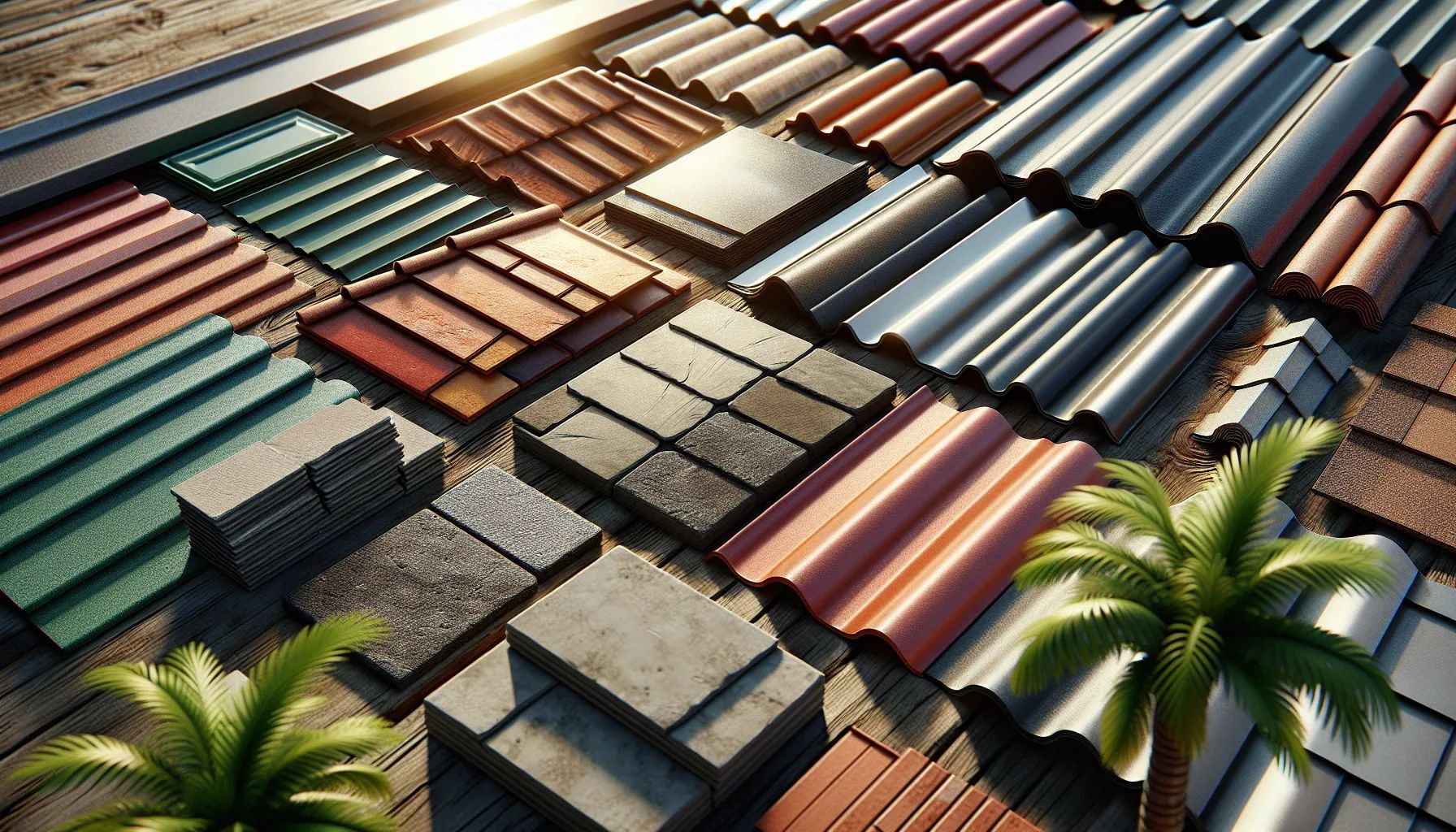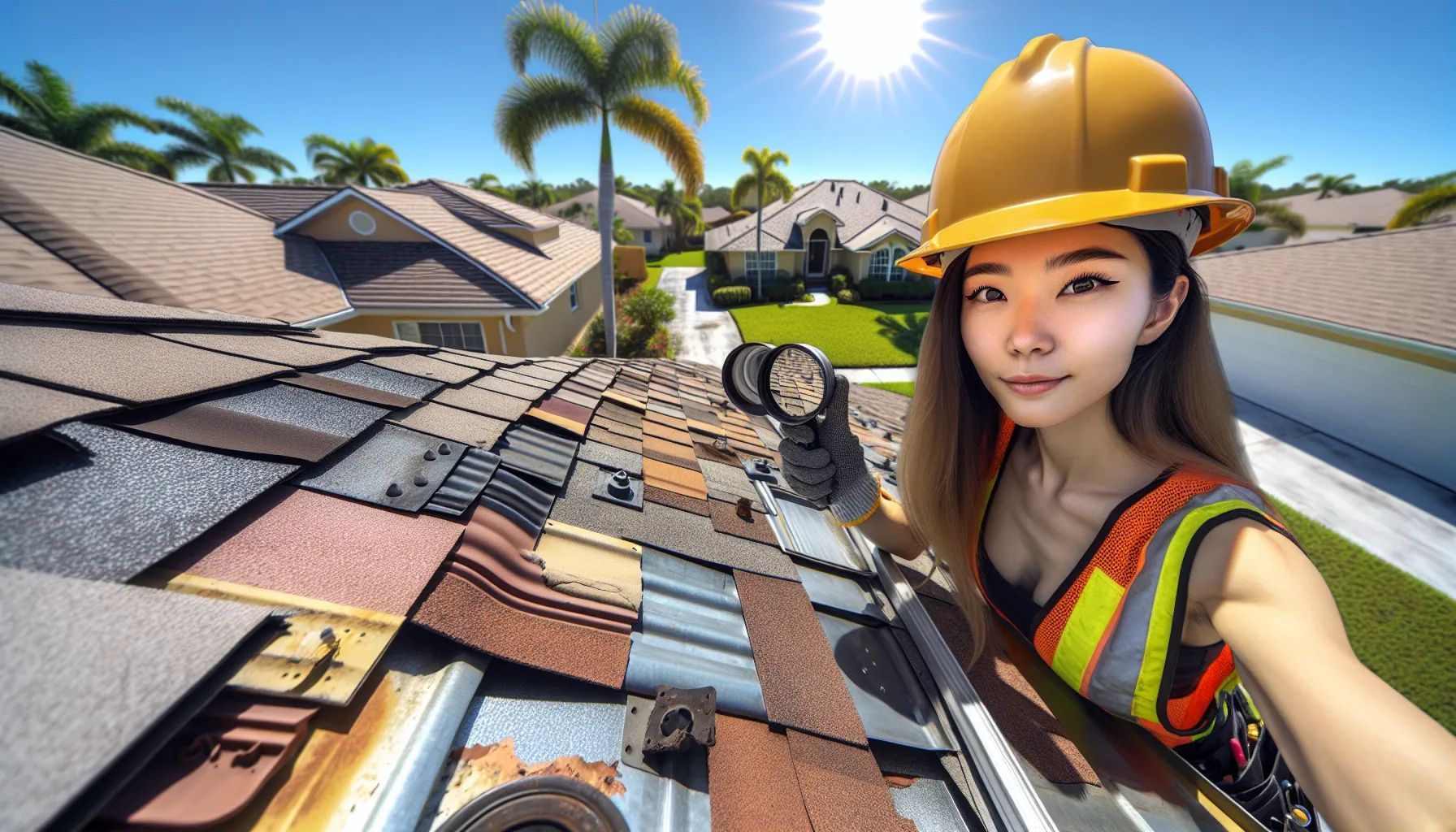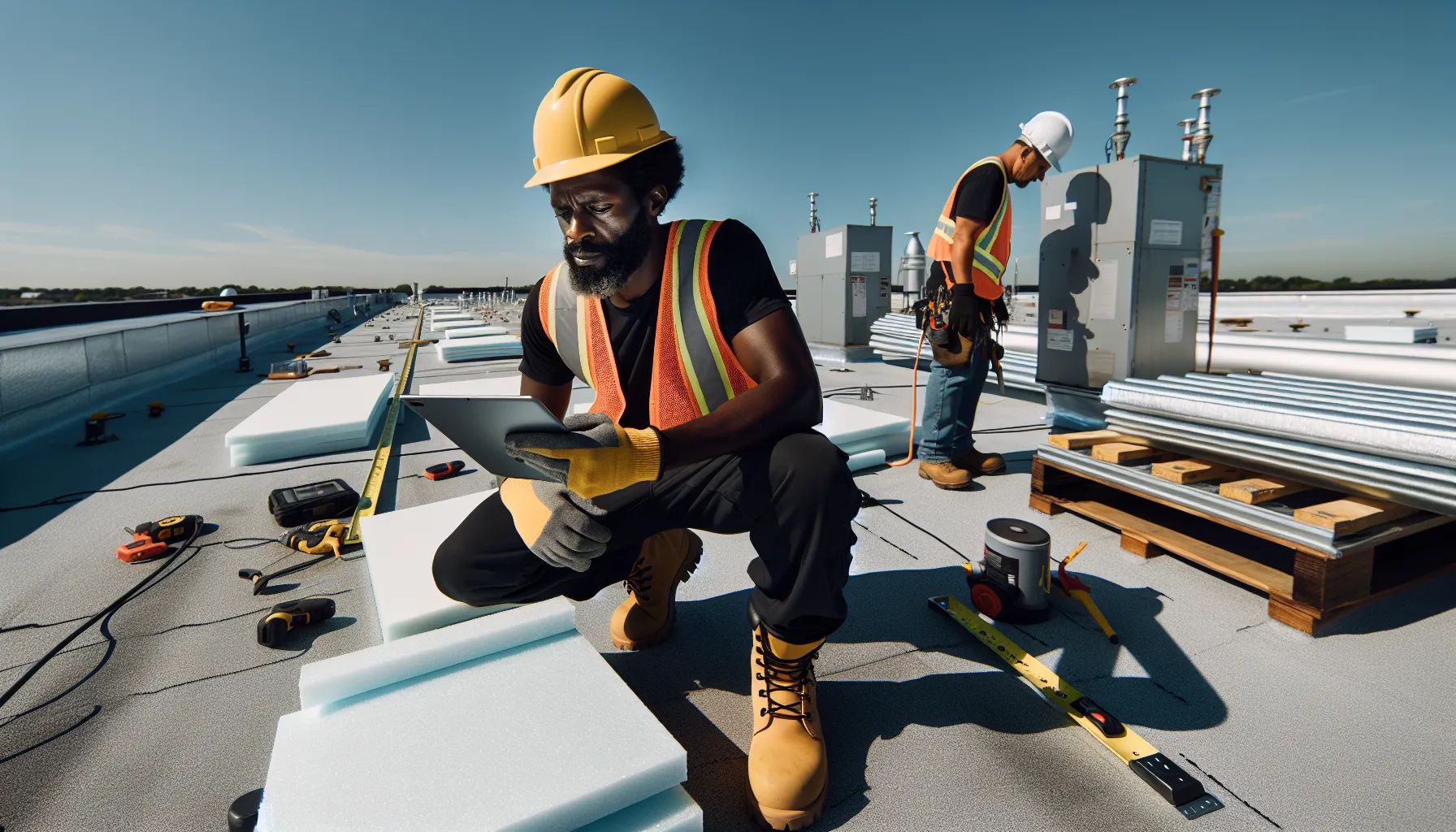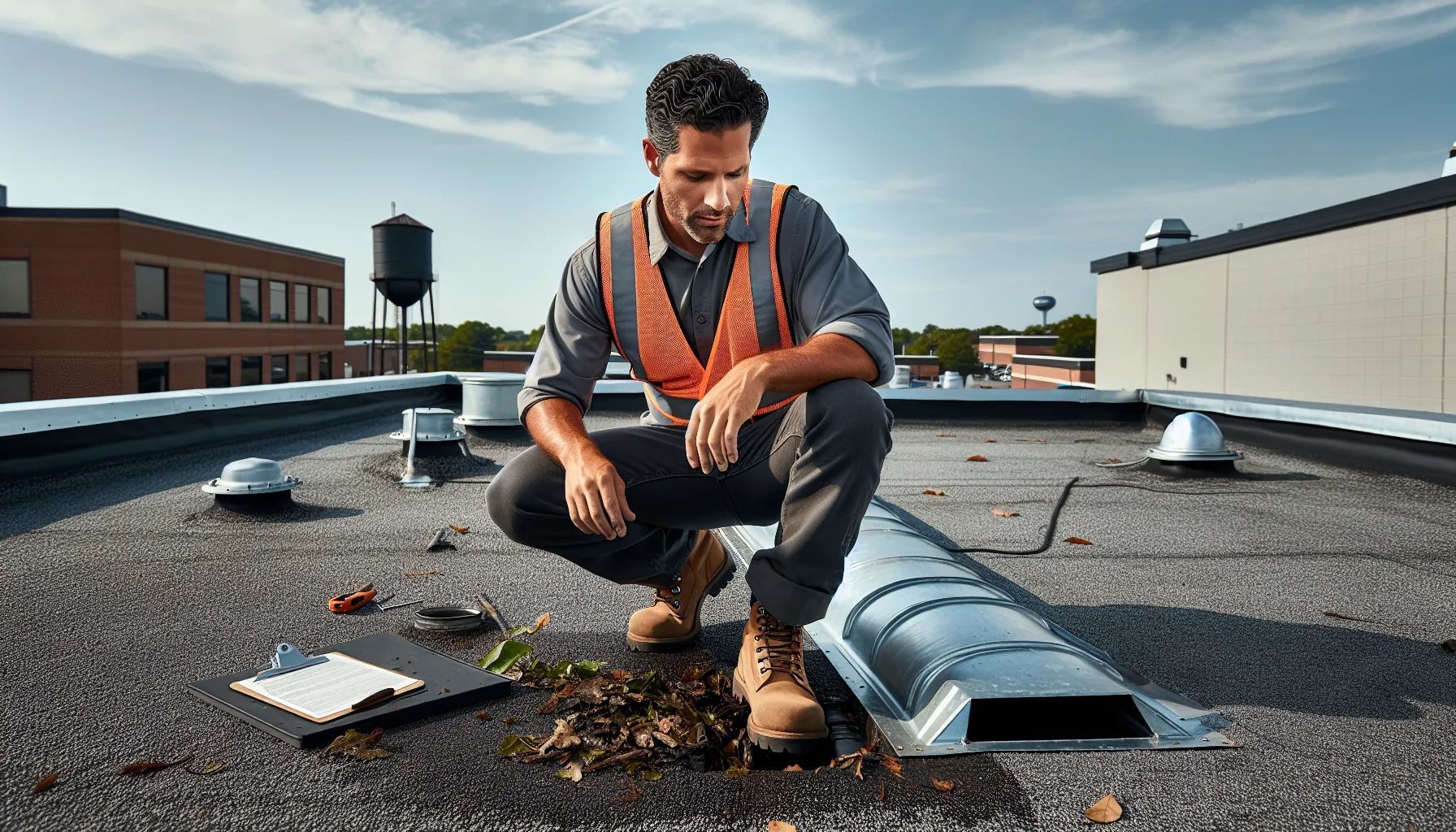Best Roofing Materials for Florida Homes: Hurricane-Proof & Energy-Efficient Options

When it comes to choosing what kind of roof is best in Florida, we face unique challenges that homeowners in other states don't encounter. Florida's intense sun scorching heat and hurricane-force winds demand roofing materials that can withstand nature's extremes while keeping our homes cool and energy bills manageable.
We've researched extensively to help you navigate the complex world of Florida roofing options. From traditional asphalt shingles to modern metal systems each material offers distinct advantages and trade-offs for the Sunshine State's demanding climate.
Whether you're building new or replacing an aging roof understanding your options is crucial for protecting your investment. We'll explore the top roofing materials that excel in Florida's environment examining their durability energy efficiency and storm resistance to help you make the smartest choice for your home.
Climate Considerations for Florida Roofing
Florida's climate creates unique challenges for roofing systems that require careful consideration. We examine the critical weather factors that impact roof performance and longevity in the Sunshine State.
Hurricane and Wind Resistance
Florida roofs face wind speeds up to 180 mph during Category 5 hurricanes. We recommend roofing materials rated for 130-150 mph winds minimum for coastal areas. Metal roofing with concealed fasteners provides superior wind resistance compared to standard asphalt shingles.
Clay and concrete tiles offer excellent wind resistance when properly installed with foam adhesive systems. These materials create a monolithic roof surface that resists uplift forces. Wind ratings vary by manufacturer, with some tile systems achieving 180 mph ratings.
Impact resistance matters as much as wind resistance during storms. Class 4 impact-rated shingles withstand hailstones up to 2 inches in diameter and flying debris. Modified bitumen and TPO membranes on flat roofs require additional ballast or mechanical attachment in high-wind zones.
Building codes in Miami-Dade County require the strictest wind resistance standards nationwide. Products meeting Miami-Dade NOA (Notice of Acceptance) certification exceed requirements for other Florida counties. We verify all roofing materials meet or exceed local wind resistance codes before installation.
Heat and UV Protection
Florida receives 3,000+ hours of sunshine annually, creating extreme heat conditions on roof surfaces. Dark-colored roofs reach temperatures of 150-170°F on summer afternoons. Light-colored or reflective roofing materials reduce surface temperatures by 50-60°F.
Solar reflectance index (SRI) measures a roof's ability to reject solar heat. Metal roofs with white or light gray coatings achieve SRI values of 70-82. Clay tiles in terra cotta colors provide SRI values of 40-60 while maintaining aesthetic appeal.
UV radiation degrades roofing materials faster in Florida than northern climates. Premium architectural shingles include UV-resistant granules that extend service life by 5-10 years. EPDM rubber membranes contain UV stabilizers that prevent cracking and deterioration.
Cool roof technology reduces air conditioning costs by 10-15% in Florida homes. Energy Star certified roofing products reflect 25% more solar energy than standard materials. We prioritize high-reflectance options for maximum energy efficiency and material longevity.
Heavy Rain and Moisture Management
Florida receives 50-65 inches of rainfall annually, with intense thunderstorms dropping 2-3 inches per hour. Proper drainage prevents water intrusion and structural damage. Roof slopes of 4:12 or greater provide optimal water runoff for shingle and tile systems.
Secondary water barriers protect against wind-driven rain during storms. Self-adhering modified bitumen underlayment creates a waterproof seal beneath primary roofing materials. Florida building code requires secondary barriers in areas prone to hurricane-force winds.
Tropical humidity levels of 70-90% create ideal conditions for algae and mold growth. Algae-resistant shingles contain copper or zinc granules that inhibit organic growth for 10-15 years. Regular roof cleaning every 2-3 years prevents moisture-related deterioration.
Flat roofs require special attention to drainage in Florida's climate. Tapered insulation systems direct water to drains and scuppers at 1/4 inch per foot minimum. We install overflow drains at parapet walls to prevent ponding during extreme rain events.
Top Roofing Materials for Florida Homes

We've analyzed the most effective roofing materials for Florida's demanding climate. Each option offers distinct advantages for hurricane resistance, heat management, and long-term performance.
Metal Roofing
Metal roofing stands as Florida's premier choice for extreme weather protection. These systems last 40-70 years and withstand winds up to 150 mph. Aluminum and steel panels reflect 70% of solar radiation, cutting cooling costs by 25%.
Metal roofs feature interlocking panels that create watertight seals. Galvanized steel costs $3-5 per square foot, while aluminum runs $4-7. Standing seam systems provide superior hurricane resistance compared to exposed fastener panels.
Florida homeowners save $500-800 annually on energy bills with metal roofing. The materials contain 25-95% recycled content and remain fully recyclable after use. Professional installation includes proper insulation to minimize rain noise.
Insurance companies offer 10-35% premium discounts for metal roofs in Florida. The investment pays back in 12-15 years through energy savings and reduced maintenance. Coastal properties benefit most from aluminum's corrosion resistance.
Clay and Concrete Tiles
Insurance companies offer 10-35% premium discounts for metal roofs in Florida. The investment pays back in 12-15 years through energy savings and reduced maintenance. Coastal properties benefit most from aluminum's corrosion resistance.
Concrete tiles cost $3-5 per square foot, while clay ranges $6-10. The weight requires reinforced roof structures supporting 600-900 pounds per square. Modern lightweight options reduce load by 40% without compromising durability.
Hurricane-rated tile systems withstand 125 mph winds when properly installed. Foam adhesive installation methods exceed traditional mortar for wind uplift resistance. Barrel tiles and flat profiles offer equal storm protection.
The thermal mass of tiles reduces heat transfer by 50% compared to lighter materials. Natural clay colors resist UV fading for decades. Concrete tiles accept paint for color customization every 20-30 years.
Asphalt Shingles
Asphalt shingles remain Florida's most affordable roofing solution at $1.50-4 per square foot. Architectural shingles last 20-30 years, while luxury versions reach 40 years. Wind ratings vary from 90-130 mph based on product grade.
Three-tab shingles provide basic protection for budget-conscious homeowners. Architectural shingles add dimension and improved wind resistance through thicker construction. Impact-resistant shingles qualify for insurance discounts in hail-prone areas.
Florida's intense UV exposure accelerates shingle deterioration by 30% compared to northern climates. Algae-resistant granules prevent black streaks in humid conditions. Light-colored shingles reflect heat better than dark options.
Professional installation includes enhanced nailing patterns for hurricane zones. Six nails per shingle exceed standard four-nail applications. Proper ventilation extends shingle life by preventing heat buildup in attics.
Slate Roofing
Slate roofing delivers unmatched elegance and 75-150 year lifespans for Florida's luxury homes. Natural stone resists wind, fire, and UV damage without degradation. Installation costs range $15-30 per square foot.
The material weighs 800-1,500 pounds per square, demanding engineered support systems. Synthetic slate alternatives reduce weight by 75% while maintaining authentic appearance. Welsh and Vermont slate offer superior density for coastal applications.
Slate's thermal properties keep homes cooler through natural insulation. The stone reflects solar heat without absorbing moisture. Proper underlayment prevents water intrusion during Florida's torrential rains.
Professional installers use stainless steel fasteners to prevent corrosion. Hip and ridge details require specialized copper or lead-coated copper flashings. Annual inspections identify loose tiles before storm season.
Cost Analysis of Florida Roofing Options

We evaluate roofing costs in Florida through three key factors: initial installation, long-term maintenance, and insurance premiums. Our analysis reveals significant price variations between materials, with metal and tile options commanding higher upfront investments but offering superior long-term value.
Initial Installation Costs
Florida homeowners face installation costs ranging from $8,000 to $50,000 depending on material choice and roof size. Metal roofing installations cost between $15,000 and $40,000 for typical residential properties. Homeowners selecting clay or concrete tiles invest $20,000 to $50,000 due to specialized installation requirements and material weight considerations.
Asphalt shingle installations remain the most budget-friendly option at $10,000 to $20,000. Flat roof systems using TPO or bitumen materials cost $8,000 to $15,000, making them the least expensive initial investment. Installation complexity affects final pricing, with steeper roofs and architectural features increasing labor costs by 15-30%.
Professional installation represents 40-60% of total project costs. Florida's building codes require licensed contractors for hurricane-compliant installations, particularly in coastal counties. Roof size directly impacts material quantities and labor hours, with costs averaging $5-12 per square foot across different materials.
Long-Term Maintenance Expenses
Metal roofs require minimal maintenance over their 40-70 year lifespan, with annual inspection costs averaging $150-300. Tile roofs similarly demand low maintenance investment, needing professional cleaning every 3-5 years at $500-1,000 per service. These materials resist Florida's algae growth and withstand UV exposure without significant degradation.
Asphalt shingles generate moderate maintenance expenses throughout their 15-30 year service life. Homeowners budget $300-500 annually for repairs, algae treatments, and replacements of damaged shingles after storms. Regular cleaning prevents premature deterioration from Florida's humidity and extends shingle performance by 5-10 years.
Flat roofs incur the highest maintenance costs due to drainage challenges in Florida's heavy rainfall environment. Annual maintenance budgets range from $500-1,500, including membrane inspections, drainage clearing, and coating reapplications every 5-7 years. Water ponding issues require immediate attention to prevent structural damage, adding $2,000-5,000 in unexpected repair costs.
Insurance Premium Considerations
Metal and tile roofs qualify for insurance premium reductions of 15-35% with many Florida carriers. These materials meet wind resistance ratings of 130-150 mph, earning discounts through fortified home programs. Homeowners save $500-2,000 annually on insurance premiums by choosing hurricane-rated roofing systems.
Asphalt shingles offer moderate insurance benefits when meeting impact resistance standards. Class 4 impact-rated shingles reduce premiums by 5-15%, though savings remain lower than metal or tile options. Insurance companies recognize newer architectural shingles with enhanced wind ratings, providing modest discounts for installations meeting current building codes.
Flat roofs rarely qualify for premium reductions and sometimes increase insurance costs in hurricane-prone regions. Insurance carriers view flat designs as higher risk due to water intrusion potential and limited wind resistance. Homeowners with flat roofs pay standard or elevated premiums, offsetting initial installation savings through higher annual insurance expenses.
Energy Efficiency and Cooling Benefits

Cool roofs in Florida reduce surface temperatures by 86-95 °F compared to dark conventional roofs. These energy-efficient systems lower air conditioning costs and improve indoor comfort throughout the year.
Reflective Roofing Technologies
Metal roofing leads Florida's reflective roofing market with solar reflectance values above 0.65. Aluminum and steel panels reflect 70% of solar radiation back into the atmosphere. White metal roofs achieve the highest reflectance ratings at 0.82 SR.
Clay and concrete tiles provide natural cooling through their thermal mass properties. Light-colored tiles reflect heat while their curved shape creates air channels beneath the surface. These tiles maintain temperatures 20°F cooler than standard asphalt shingles during peak summer hours.
Composite tiles combine synthetic materials with reflective pigments to achieve cooling performance. These lightweight alternatives to natural tiles offer 0.70 SR ratings with enhanced UV resistance. Manufacturers design composite tiles to mimic clay aesthetics while delivering superior energy efficiency.
Cool roof coatings transform existing roofs into reflective surfaces. Elastomeric coatings applied to flat roofs increase reflectance from 0.20 to 0.75 SR. These coatings extend roof life by 10-15 years while reducing cooling loads by 20%.
Insulation Requirements
Florida building codes mandate R-30 insulation for attics in climate zones 1 and 2. Proper insulation creates a thermal barrier that prevents heat transfer into living spaces. Radiant barriers installed beneath roofing materials reflect 97% of radiant heat away from attics.
Spray foam insulation seals air leaks while providing R-6.5 per inch of thickness. Closed-cell foam prevents moisture infiltration in Florida's humid climate. This insulation type reduces cooling costs by 30% when combined with reflective roofing.
Fiberglass batt insulation remains the most common choice for Florida homes. R-38 fiberglass batts in attics meet energy code requirements for most residential applications. Proper installation eliminates gaps that compromise thermal performance.
Rigid foam boards provide continuous insulation above roof decking. Polyisocyanurate boards offer R-6 per inch with minimal thickness requirements. These boards create thermal breaks that prevent heat conduction through roof framing members.
Building Codes and Compliance Requirements
Florida's roofing regulations rank among the strictest in the nation due to extreme weather conditions. We'll examine the specific codes and standards that govern roofing installations across the state.
Florida Building Code Standards
The Florida Building Code (FBC) updates approximately every three years to address evolving safety requirements. The 2007 update introduced comprehensive material and installation standards that dramatically improved roofing performance during hurricanes.
Wind resistance classifications form the foundation of Florida's roofing standards. Coastal areas require materials rated for 130-150 mph winds. The FBC mandates specific testing protocols including UL 790 and ASTM E 108 for fire resistance ratings.
Fire classifications under the FBC include three categories:
- Class A: Highest fire resistance (clay tiles, concrete tiles)
- Class B: Moderate fire resistance (metal roofing systems)
- Class C: Basic fire resistance (certain asphalt shingles)
Installation methods receive equal scrutiny under the code. Roofing contractors must follow manufacturer specifications and FBC guidelines for fastener patterns. Enhanced fastening schedules apply within one mile of the coast.
The FBC requires secondary water barriers on all new installations. These barriers prevent water intrusion when primary roofing materials fail during storms. Peel-and-stick membranes meet this requirement in most applications.
Local Municipality Regulations
Individual cities and counties often exceed state requirements through local ordinances. Miami-Dade County maintains the most stringent standards in Florida. Their High Velocity Hurricane Zone (HVHZ) protocols require additional testing beyond standard FBC compliance.
Permit requirements vary significantly between municipalities. Most jurisdictions require permits for full roof replacements. Some areas mandate permits for repairs exceeding 25% of the roof area.
Local building departments enforce specific aesthetic standards in certain neighborhoods. Historic districts may restrict material choices to maintain architectural consistency. Homeowners associations frequently impose additional requirements beyond municipal codes.
Inspection protocols differ across Florida municipalities. Urban areas typically require multiple inspections during installation. Rural counties may conduct single final inspections. Contractors must schedule inspections at specific project milestones.
Documentation requirements increase in hurricane-prone regions. Building departments often request product approval numbers and installation certifications. Maintaining these records proves essential for insurance claims and future property sales.
Conclusion
Selecting the right roof for your Florida home requires balancing multiple factors beyond just upfront costs. We've seen how metal roofing consistently delivers the best overall value through superior hurricane protection and energy savings that offset its higher initial investment. While clay tiles offer excellent heat resistance and aesthetic appeal for Mediterranean-style homes and asphalt shingles provide budget-friendly basic protection we recommend consulting with licensed contractors who understand local building codes and installation requirements specific to your area.
Your roof choice directly impacts your home's resilience against Florida's extreme weather patterns and your long-term expenses through energy costs and insurance premiums. Whether you're building new or replacing an existing roof investing in quality materials and professional installation will protect your home for decades to come. We encourage you to get multiple quotes from certified contractors and consider the total lifetime value rather than just initial costs when making your final decision.
What is the best roofing material for hurricanes in Florida?
Metal roofing and properly installed clay/concrete tiles offer the best hurricane protection, rated for 130-150 mph winds. Metal roofing is particularly effective due to its interlocking panels and minimal wind uplift. Both materials qualify for insurance discounts and meet Miami-Dade County's strict wind resistance standards, making them ideal choices for coastal areas prone to extreme weather.
How much does a new roof cost in Florida?
Roof replacement costs in Florida range from $8,000 to $50,000 depending on material and size. Asphalt shingles are most affordable at $10,000-$20,000, while metal roofing costs $15,000-$40,000. Clay tiles and slate are premium options reaching up to $50,000. Though metal and tile cost more initially, they offer better long-term value through reduced maintenance and insurance savings.
Which roofing materials qualify for insurance discounts in Florida?
Metal roofing and clay/concrete tiles typically qualify for insurance premium reductions of 15-30% due to their superior wind and impact resistance. These materials meet or exceed Florida's building codes for hurricane protection. Asphalt shingles with high impact ratings may qualify for smaller discounts, while flat roofs often increase premiums due to drainage concerns.
How do cool roofs benefit Florida homeowners?
Cool roofs reduce surface temperatures by 86-95 °F compared to dark roofs, significantly lowering air conditioning costs. Metal roofing with reflective coatings, light-colored tiles, and specialized cool roof membranes reflect solar radiation instead of absorbing it. This technology can reduce cooling expenses by 20-30% while extending roof lifespan by minimizing thermal stress.
What are Florida's roofing code requirements?
Florida Building Code requires roofing materials to meet specific wind resistance ratings based on location - typically 130-150 mph for coastal zones. Secondary water barriers are mandatory for new installations, and materials must have appropriate fire ratings. Local municipalities may have additional requirements for permits, inspections, and aesthetic standards that homeowners must follow.
How long do different roofing materials last in Florida?
Metal roofing lasts 40-70 years, clay/concrete tiles 50-100 years, slate 75-200 years, and asphalt shingles 15-25 years in Florida's climate. UV exposure, humidity, and storms significantly impact lifespan. Regular maintenance and proper installation can extend service life, with metal and tile options providing the best long-term durability despite higher initial costs.

